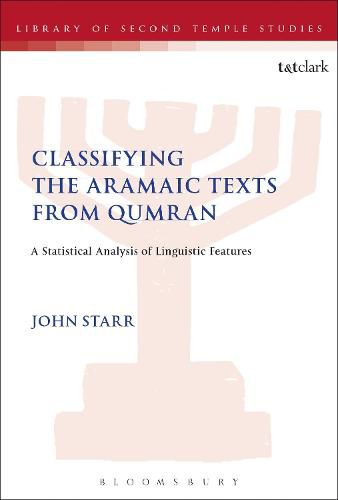Readings Newsletter
Become a Readings Member to make your shopping experience even easier.
Sign in or sign up for free!
You’re not far away from qualifying for FREE standard shipping within Australia
You’ve qualified for FREE standard shipping within Australia
The cart is loading…






Analysis of the scroll fragments of the Qumran Aramaic scrolls has been plentiful to date. Their shared characteristics of being written in Aramaic, the common language of the region, not focused on the Qumran Community, and dating from the 3rd century BCE to the 1st century CE have enabled the creation of a shared identity, distinguishing them from other fragments found in the same place at the same time. This classification, however, could yet be too simplistic as here, for the first time, John Starr applies sophisticated statistical analyses to newly available electronic versions of these fragments. In so doing, Starr presents a potential new classification which comprises six different text types which bear distinctive textual features, and thus is able to narrow down the classification both temporally and geographically.
Starr’s re-visited classification presents fresh insights into the Aramaic texts at Qumran, with important implications for our understanding of the many strands that made up Judaism in the period leading to the writing of the New Testament.
$9.00 standard shipping within Australia
FREE standard shipping within Australia for orders over $100.00
Express & International shipping calculated at checkout
Analysis of the scroll fragments of the Qumran Aramaic scrolls has been plentiful to date. Their shared characteristics of being written in Aramaic, the common language of the region, not focused on the Qumran Community, and dating from the 3rd century BCE to the 1st century CE have enabled the creation of a shared identity, distinguishing them from other fragments found in the same place at the same time. This classification, however, could yet be too simplistic as here, for the first time, John Starr applies sophisticated statistical analyses to newly available electronic versions of these fragments. In so doing, Starr presents a potential new classification which comprises six different text types which bear distinctive textual features, and thus is able to narrow down the classification both temporally and geographically.
Starr’s re-visited classification presents fresh insights into the Aramaic texts at Qumran, with important implications for our understanding of the many strands that made up Judaism in the period leading to the writing of the New Testament.